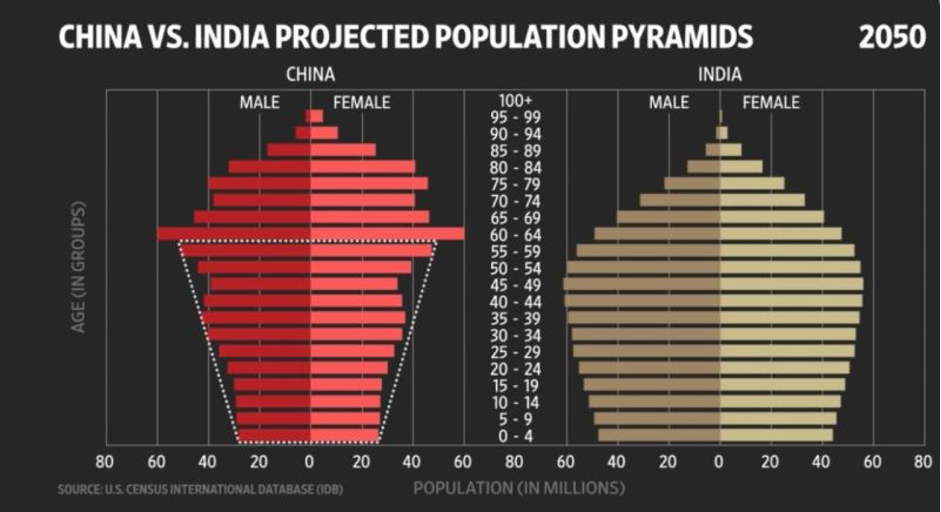
The dark side of the Chinese policy of 1 child per family will be felt over the next 5 decades.
Apr’23, India replaced China on the scale of population. In terms of demographic construct (not in terms of numbers), India today has similarities to China of 30 years back. Population in India is expected to continue to rise over the next 4 decades where as in China it is going to shrink. China needs a fertility rate of 2.1 to replace its aging population, current fertility in China stands at 1.2.
The dark side of the Chinese policy of 1 child will be felt over the next 5 decades. While China will have an old age population composition of 65% in its population mix India will have only 29% towards the end of next 40 years. That means, a much younger population and hence a larger pool of work force.
But will this demographic advantage ensure growth and prosperity for India. There are subtle differences in the way China and India is structured. Over the years a larger population in China moved to cities to work in factories which is not the case in India – there continues to be a preference in India to remain rooted to their homes and mass migration is not observed. Secondly, compared to China participation of Indian women in industry workforce is negligible.
The bottom line; India has built significant demographic advantage (not necessarily by design) vis a vis China, but the ability to pull growth and prosperity will be proven with time. Nevertheless, the growth centers on the global map will reside in global south which is appearing prominently.
